Dave's Moons
The planet Dave boasts 99 moons, a type of natural satellite. This is the largest number of moons orbiting a planet by far in the AO5 System, and one of the largest number of moons for a planet in the entirety of the Pereleos Galaxy.
Through the reliance on the forces of nature and magic, these 99 moons all orbit Dave in complete harmony. There is zero chance of two or more moons colliding with each other, and each moon's orbit and speed makes it so that no moon will ever crash into another, which means the residents of the moons and Dave are at no risk at all.
Aerelis
Aphan
Aphan is the second smallest moon orbiting Dave. It is inhabited by some of the smallest creatures you'll ever see, the miniscule berry bugs.
Berry bugs live in the tropical rainforests that cover Aphan, the chromatic reds and purples of the giant trees that make this moon stand out amongst others. The trees are so large that each one is visible from space.
Ars
Ars is one of the more unusual moons as it is not technically a moon, instead an honorary one. This celestial object is not made of moonrock like most moons, but is instead a large hibernating creature.
The animal is nicknamed "Large Ars", due to its large size and its pungent smell. Large Ars belongs to the arsinon species, a species with only fifteen known individuals, scattered around District 1 of Aavar's River.
Bauran
Bauran's entire surface is coated in a spiky, tangled forest of tassel brambles. These plants grow in large clumps and have coated the entirety of the land on Bauran, while the seas are home to a thinner aquatic variant of these plants. The animals here are extremely agile, as they have adapted to life within the mess of brambles. The forests grow to about thirty feet tall, and it is impossible to see more than a few feet in any direction.
Because of the density of the brambles, from space Bauran appears a very dark green colour, along with the dark blue seas.
Cristali
Czizsin
Despite it's outer appearance, Czizsin is a highly populated moon. It is simply a facade, hosting a cave city to thirty million in its hollow insides. On the outside, this moon is a bright yellow, with
Dia
The resident diamond bunnies on Dia are not the happiest with the trigger-happy feretel that has taken up most of the moon with his absurdly large private aquariums. A maze of tanks and aquariums are home to thousands of marine species from across the Yonderverse, organised by planet. Swim through the rivers of the rainforests of Vipheanus, take a dive in the icy waters of Ocearia, or even the Inner Ocean of Dave. These aquariums contain some extremely strange creatures, and if you pay enough money, you can get a private tour. Just try not to insult the man, and he's rather sensitive.
The actual moon itself is home to iridescent forests, containing trees that produce tiny crystals. The ground itself is infiltrated by these crystals too, the larger ones forming hills and even mountains embedded into the moonrock. The creatures of the planet, like the previously mentioned diamond bunnies, have a mutualistic relationship with these crystals, even hybridising to form magnificent creatures.
Echo
Echo's entire ecosystem consists of various species of falran, a class of organisms that resemble both mammals and reptiles. There are thousands of species of these scaly, warm-blooded animals on not just Echo but on several other moons, as most falrans can survive the climates of space and have ventured outside of the moon's atmosphere and sought refuge in other places.
Echo gets its name from the sound the moon produces as it orbits Dave. The moon creates this quiet humming sound, identical to a piece of technology, as it moves through space. Many wonder what causes this noise, as there is no evidence of intelligent life capable of creating a large piece of technology that could make this noise, and it is not natural.
Echsauras
Travel to and from this moon is banned, thanks to the presence of an extremely dangerous and extremely communicable virus. This virus transforms its host into a horrific looking, bloodthirsty monster. The virus affects any species, but not every single member of the species, seemingly at random. Hosts are nicknamed "zombies", after their appearance and demeanor greatly resembling the not-so-mythical monster from Earth.
This virus currently has zero cure. The 37% of the first fleet of explorers contracted this virus, and in three days every single symptom was apparant and the spacecraft was left floating lifeless through space. It is now found in a laboratory located somewhere in the Otoo Belt, the largest asteroid belt in the AO5 System.
Ede
Among the many moons, Ede is one of the many solely oceanic. Ede lacks a core, just like its home planet, Dave. Instead, Ede has a core consisting of rings of thick plant matter, which serves as a home for millions of sea creatures. The moon is constantly lit up thanks to bioluminescent plankton, that is impossible to see but illuminates even the centre of the moon, through the thick stems and vines of the plants.
A group of davites that call themselves Dave's Saviours live in Ede. Dave's Saviours believe that davites are harmful to the planet thanks to their constant secretion of acids that are slowly turning the planet more acidic, so these people decided to leave and live on Ede too. Ede resembles Dave's Outer Ocean almost exactly in terms of pressure and climate, making it a perfect home for davites. Davite's Saviours believe that in order to restore Dave to its former glory when it was 0.5 pH higher, Ede must sacrifice itself.
Faet
Faet is one of the many oceanic moons orbiting the oceanic planet Dave. What distinguishes this oceanic moon from its bretherin is that Faet is home to the largest ice caps on any moon, spanning 92% of the moons' surface. The moon's elliptical orbit means that it constantly orbits Dave as far away from Pamela, the star, as possible, one of the reasons Faet stays so cold.
Faet is inhabited by a small group of davites, similar to Dave's Saviours, that believe Dave needs saving from davites. These davites enjoy the freezing temperatures, and have adapted to this temperature rather fast.
Grayagawa
Grayagawa's lack of mammal life is made up for by the abundance of insect species. Insects dominate this moon, and have evolved to grow to great sizes, some of the larger species exceeding 60 feet in length. The environment of this planet is peculiar; the surface of the moon is comprised of trillions of small pebbles and large boulders that circle a small core.
Nobody is quite sure on how this moon formed. Many speculate that the moon is formed from a small asteroid belt being caught up orbiting a much smaller moon, but this is just a hypothesis as there is no proof to back up this claim.
Hoo Man
Similarly to Man, the presence of Hoo Man perplexes all those who gaze upon it. Hoo Man is an entire skull of an unusually gigantic human, an intelligent species from Earth. The existence of this giant skull is unknown, since humans seldom grow more than 6 feet and they are extinct, aside from one individual.
Thankfully to the inhabitants of Dave, Hoo Man orbits too far away that it cannot be seen from the surface of the planet. It actually orbits outside of Dave's legal boundaries, and because of this other planets own a small portion of the skull to mine resources.
Icaris
Davite scientists know an extroardinary amount about this moon, including its exact size and the knowledge that Icaris is the 77th largest moon orbiting Dave. Why they know this and actively studied it, nobody will know.
Icaris is made up of a magnetic substance known as caeralium. Caeralium is a bright blue colour, and as a result of the high concentration of this material, Icaris is this same colour. Icaris has a highly elliptical orbit, and once a Davite year Icaris will reach its closest point to the planet, and at the very same time the Obsidian Stone will reach its closest point to the planet's watery surface.
The two giant magnetic objects will meet, almost touch, and create what is known as a Bioluminescent Atmosphere. This atmosphere is only created due toJeiha
Jeiha is one of the more interesting moons, as it was once struck by an incredibly large asteroid seemingly composed of an acidic substance so strong that it burnt through the moon immediately upon impact, causing the formation of a circular hole through the centre of the moon. Because of this, the atmosphere on Jeiha has shifted entirely from a cold climate to scorching hot, killing off 99.99% of life on the moon. Those creatures that survived were able to quickly adapt and survive in these catastrophic conditions.
Kay Har
The nutritious soil of Kay Har greatly benefits those who live here; sprawling fields of green and orange crops take up about 50% of the entire moon. This moon is yet another example of the uuyurian displacement caused by the Karkhalans of Bob.
The tiny settlements of the moon span many miles, thanks to the crop fields that grow millions of tonnes of food distributed to many other civilisations on other planets.
Kay Har comes from the kaharian words for "plentiful food", "har" meaning "plentiful" and "kay" meaning "food".
Kerina
Kerina is home to a small species of intelligent slug known as the kerinans. This vibrant moon is comprised mostly of tourmaline, with giant shards of the gemstone forming pillars that stick out of the moonrock soil.
Kerina is popular with visitors, for the kerinans are very welcoming and the moon itself is absolutely stunning. Kerina made it to 1st place on the Top 10 Most Beautiful Moons of Dave 6 years running, a record number.
Killadan
This moon's oceans are all freshwater, and are home to some of the most intriguing species imaginable.
The most prominent species on Killadan are the killfish - these large bony fish have heads twice the width of their bodies, and they can release streams of blood from holes above their eyes to slice prey in half.
Lahara
This moon's incredibly high temperatures has resulted in the formation of rivers of melted copper. The dark grey atmosphere conceals the hundred mile wide volcanoes that dot the planet, erupting several times a Dave year, causing flash copper flooding across the burning lands.
The rivers are inhabited by complex ecosystems that thrive where they live but cannot survive anywhere else. Some species include drinkers, small filter feeding cetaceans, and bismuthians, a sophont species who's physical anatomy largely resembles the element bismuth.
Luphemia
Named after Luphemis, God of Lust, Luphemia is a bright pink moon. Spectrill bacteria with a mutation that causes them to solely glow a bright pink colour.
The moon is inhabited by various other species, including glowkites. These animals release an incredibly potent chemical that entices speckled toads into flying up into the air, where the glowkites go into a feeding frenzy.
Lybris
Lybris is a semi-artificial moon. It has existed in orbit for thousands of years, but roughly a thousand years ago it was transformed into an immense library containing prophecies, ancient texts, and the like.
Nobody is quite sure who constructed this library. It seemingly appeared out of thin air, and there are no images or recordings of the library being constructed. Its architecture does not resemble a single sophont in existence, either.
Lyre
Lyre is a moon coated in eggs embedded into the monochrome soil. Stalking the plains of Lyre are the lyrebirds, menacing monsters that can run faster than one could ever imagine, with the bite force powerful enough to rip apart the strongest of materials. Lyrebirds should not be confused with the adorable birds of the same name from planet Earth; Lyre's lyrebirds would eat one of Earth's lyrebirds in a heartbeat.
Despite this, the illegal trafficking of lyrebird eggs is an ongoing issue. These eggs are shovelled out of the ground and shipped off the moon in their millions, sold to the highest bidders. Lyrebirds are kept as guard animals, owned only by the wealthiest and most powerful underlords of the Yonderverse's deep dark underworld.
Moro
Right in the centre of the glasses shaped crater of Moro is Moro University, named after Moro, the smartest terani in the area. A large area, because she's the only terani to live in the 1 billion kilometre radius. The University is aimed at adults seeking to earn themselves a degree if they failed to previously, or simply for the fun of it. You make up your own schedule at Moro University, so long as you pass and earn yourself that degree. The University's courses are free as long as you pass - if you don't they cost more than you could imagine.
Those on Moro are taught to respect the natural environments of the moon. The only required course is a three week long course on Natural Environments And How To Take Care Of Them, or Natural Environments for the lazy. This course teaches you about natural environments, the animals and plants native to Moro, and the disasters that would come if the environments were destroyed and animals went extinct.
Norithin
Norithin is run by possibly the most loving government in the entire Yonderverse. The entire government is overseen by one man, and this man cherishes his people more than he does himself. Iccharak is the leader of Norithin, and every single law he has passed protects and benefits the people of the moon. Because of this, the civilisation on the moon has been able to rapidly progress and has seen some of the fast economical and technological developments in modern times.
Not only does Iccharak care about his people, he also cares about Norithin. All of the wildlife are legally protected, and it is against the law to unethically kill any creature. There are situations where it is legal of course, such as self defense as there are many dangerous species, but aside from that people are taught to respect the animals on the planet, and treat them as equals.
Ofae
One of the smallest moons orbiting Dave, Ofae is home to a race of incredibly intelligent isopods. Known as the ofaei, these hardy invertebrates can live comfortably on land, in fresh and in salt water. They are one of the most adaptable species, with both lungs and gills, able to absorb oxygen through its hard chitin that protects them from predatory species, and can scuttle at incredibly high speeds.
The entire moon resembles the ground floor of a regular forest, only without the trees. Plants that mimic giant leaves coat the ground, providing shade to the smaller fungi that grow in the soft, nutritious soil. This ecosystem is incredibly precious, and if any non-native species were introduced to Ofae, it would be catastrophic. For that reason, the ofaei have banned any travel to and from the planet, and any incoming spacecrafts are shot down and the remains are incinerated.
Okka
Writhing black tentacles seep out of Okka. Many wonder what is hidden underneath, a monster cocooned in silty black soil.
The moon is home to very few animals and plants. What's more common are fungi species that produce extremely toxic chemicals to keep the tentacles from reaching down to the ground and grabbing at them, like they do with the various fauna.
Omolla
Inhabited by the ever so small molla mollas, Omolla is an oceanic moon. It has a core, and the oceanic surface of Omolla is on average 500 metres deep. This moon's population of 3 billion is the largest population of any of the 99 moons of Dave. Molla mollas live in large harmonious cities made of coral, harvested and carved into small buildings.
Omolla's average temperature is around 60 degrees C, making it the hottest oceanic moon by about 40 degrees.
Phosphor
Phosphor is named after its thin atmosphere of 99% phosphorus. The animals on this moon are bioluminescent, and Phosphor has earned its nickname The Glowing Moon. A species of intelligent humanoid has arisen on the planet, that call themselves ari'ni, or "glowing" in their most spoken language.
The life on Phosphor is particularly fascinating as these animals have survived in one of the most unique atmospheres. Phosphorus is not commonly seen to dominate an atmosphere, almost zero planets have more than 10% phosphorus in its atmosphere and even less moon have it. One of the most interesting species are blooming cotorols, a species of flower that are able to duplicate phosphorus atoms. Hundreds of years of meticulous research as resulted in zero answers to this scientific mystery.
Poyama
One of the more perplexing moons, Poyama seems to be constructed almost entirely of a cardboard like substance. The most intriguing part about this is that cardboard is an artifical substance, yet there is no proof that this moon is artificial, and all the proof that it is a natural planet, like most other planets orbiting Dave.
Scientists scratch their heads at this mysterious moon, but one thing is for sure, it is by far not the most unusual of moons to orbit the planet.
Pufehra
Another moon for Karkhala to sink its fangs into is Pufehra. This moon is essentially one giant vein of assorted minerals, including copper, gold, platinum, rubelium, caerelium, among others. The presence of the latter two metals also creates a permanent Bioluminescent Atmosphere, a rare phenomena in the Yonderverse.
Unsurprisingly, Karkhala has taken ownership of this planet, despite it being legally owned by Dave. Davites are not happy about this, and are fighting to earn the ownership back of this moon.
Rhodelia
A bright green mist envelops the yellow mountains on Rhodelia. This green mist is toxic to those from other lands, so be careful if you venture on to this moon. Despite the entire moon being incredibly toxic, the creatures could not be friendlier. You cannot go five minutes walking through the mountains without walking into a pack of vernirins, who will seek out the closest plant to bring to you as a gift.
Proof that the kavaari once settled on this moon for an extended period of time exists in the form of a small settlement located within a crater surrounded by small mountains. This settlement greatly resembles others built by kavaari, as well as the statue of a kavaari leader synonymous with the species. These statues were left on every single planet the kavaari visited in their great search for a new planet to call home. Sadly they never found one, and wound up extinct.
Therolea
Therolea has the coldest recorded temperatures of any moon orbiting Dave. The poles reach temperatures of -158℃, and most species struggle to survive in these conditions. The animals here are well adapted, yet still struggle. Cartilaginous selehers are a large mammal species with incredibly thick white fur that bury themselves in the ground and stalk their prey as they come close.
Cartilaginous selehers are kept as pets in private collections as they are extremely dangerous, and high-profile celebrities enjoy the attention they get for having these alien animals. These animals are also easy to feed: meat. Just feed them meat and they'll be happy and love you forever.
Titi
The other of the two moons previously inhabited by the kavaari, Titi is named after Titinus, the kavaarian ship that brought these people to the moon. The name of the ship was etched into the kavaari leader statue, and since explorers landed on this moon, the name Titi stuck.
The moon itself is covered in small volcanoes that frequently erupt. Titi's core contains caeralium, a magnetic substance, and because of it the volcanoes erupt a bright blue lava.
Viren
Small settlements of no more than a hundred are found scattered across the dry, arid wastelands of Viren. These settlements are inhabited by uuyurians from the planet Bob, that fled from their home thanks to Karkhalan influence. These uuyurians could not be more angry about this displacement, and are determined to destroy every Karkhalan that have settled on Bob.
Sadly though, there is little to do on Viren. The people can barely survive on this moon, and they cannot leave since their only method of space transport has crashed and burned after their attempt to leave the moon sixty years ago.
Werde
Werde is a verdant blend of grasslands and humid rainforests. There is a severe lack of oceans and water, and most of the species on the planet rely on the soggy soil and constant rainfall to survive.
The moon is inhabited by thousands of large insect species, from the docile shiverworms to the wisps that swarm predators in their hundreds. Some of these animals are used as bioweapons, manipulated to follow simple orders as they have fairly simple brains.
Xarilia
Xarilia's purple atmosphere has caused many to believe the moon itself is the same purplish colour, when in fact the soil is a bright yellow. The sulphurous soil is extremely magnetic as it contains large amounts of iron - adventurers learnt this the hard way, when they landed with suits of magnetic materials.
There are very little creatures on Xarilia, which are also tiny in size. One example is the sulphurfly, a small yellow butterfly species.
Xerede
Xerede is the largest of the four moons beginning with the letter X. Those who named the moons of Dave felt bad for how unpopular this letter was, and so named a handful of them beginning with this letter.
Xerede is inhabited by thousands of herd animals, grazing along the buttery purple meadows. In fact, most plants on this planet taste of butter, and nobody knows why. It is a perplexing mystery, however it is a popular item to cook with, particularly flavouring roasted meats.
Xnurin
Xnurin is inhabited by exactly a million different species of wild dog. Ranging from the pebble sized clover-dogs to the boulder hounds that run in packs of a hundred, these dogs are often shipped to different planets and kept as exotic pets.
The moon itself is covered in a variety of biomes. The most common biome, a mixture of silken trees and honey bushes, covers around 24% of the moon's landmass, while oceans cover approximately 56% of the entire moon's surface.
Xnurin is a popular refugee moon thanks to its cool climate and lack of dangerous animals. The largest refugee site, Alaxia, has a population of about 60,000 and is comprised mostly of uuyurians from Bob who have been displaced thanks to the work of various Karkhalan corporations taking up large amounts of land.
Xunth
This particular moon is generally avoided by the public, because it has recently been taken over by Karkhalan Military as a spy base to watch over the planet and its inhabitants. Turns out it's difficult to hide several large Stargazer Transport Shuttles transporting large military vehicles and weapons, as well as countless cargo shuttles to construct said base.
Davites have peacefully protested against this military base, but unfortunately since it is one of the only moons to orbit outside of Dave's legal boundaries, there is nothing they can do against it. High powered spyglasses help the spies keep a close watch on the davites, praying they somehow wind up extinct. They definitely don't have plans, and definitely are not constructing massive bioweapons to wipe out the planet. Who would do that?
Yiiita
Yiita's barren, seemingly uninhabited surface contrasts against the vibrant, neon caverns found below, twisting and turning throughout the moonrock. Millions of mushroom species prop up the dimly lit caverns, illuminated by bioluminescent fungi and plant species.
These fungi and plant species are used in many herbal medicines, supposedly curing the uncurable. Folklore surrounding these species are widespread, and as a result many adventurers seek out the rarer plants and fungi from Yiita, and because of it the ecosystems are suffering. Davites are currently bringing in new laws to protect the species of Yiita, that will ban anybody from taking endangered species from its natural environment.

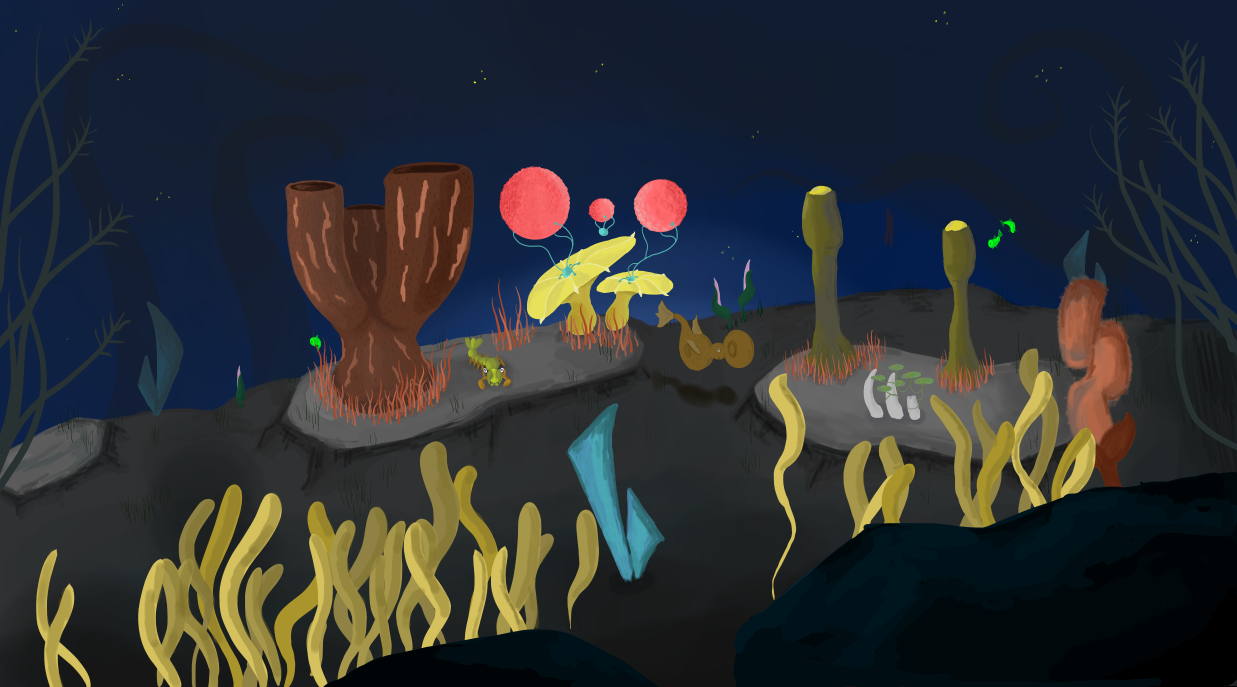
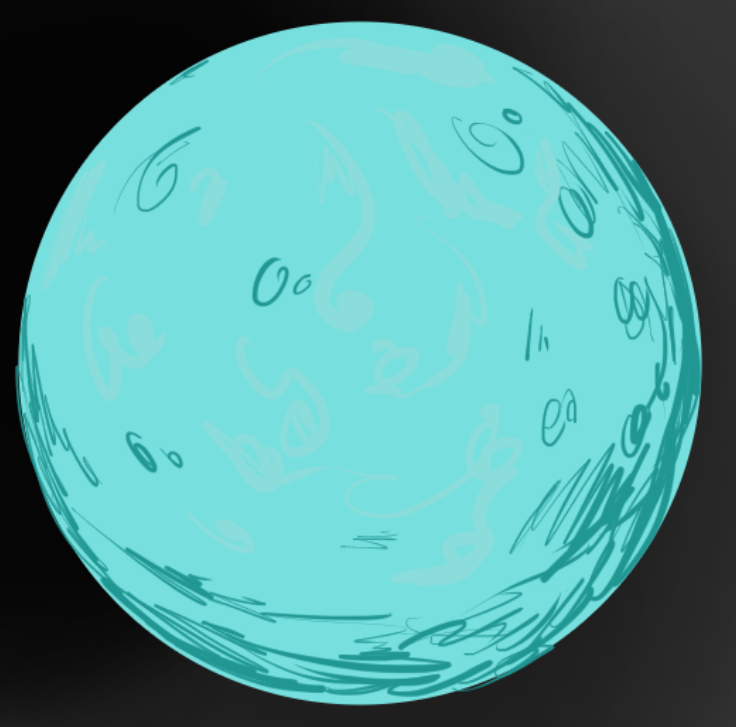
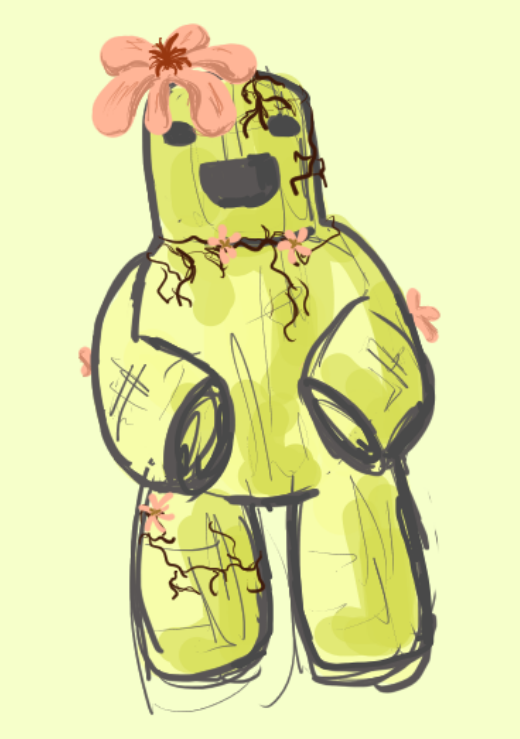
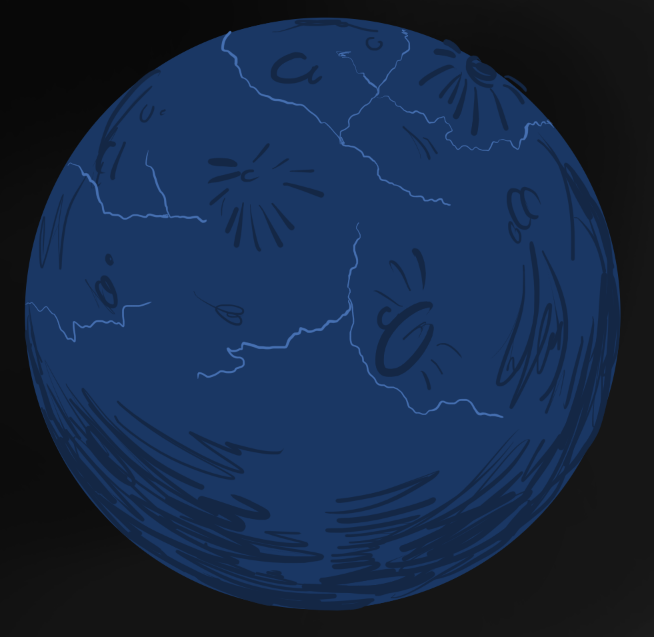
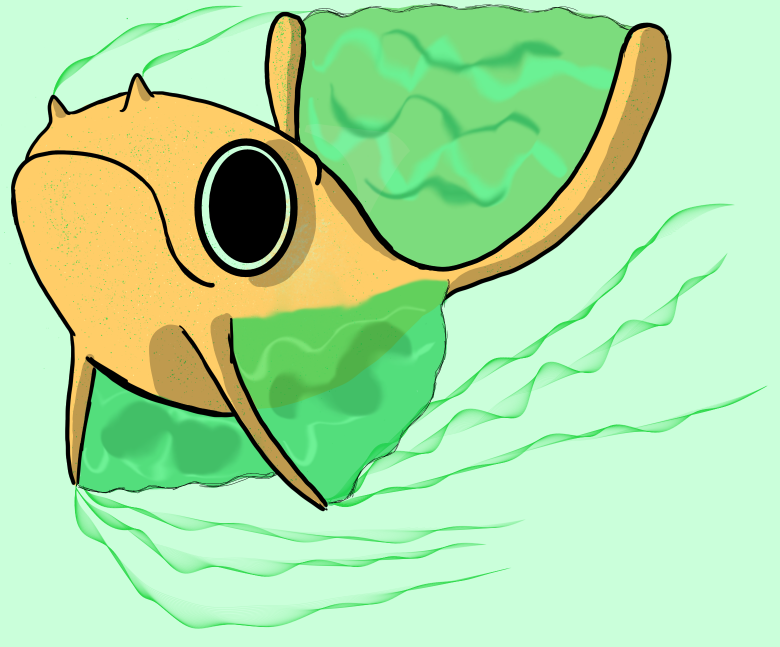







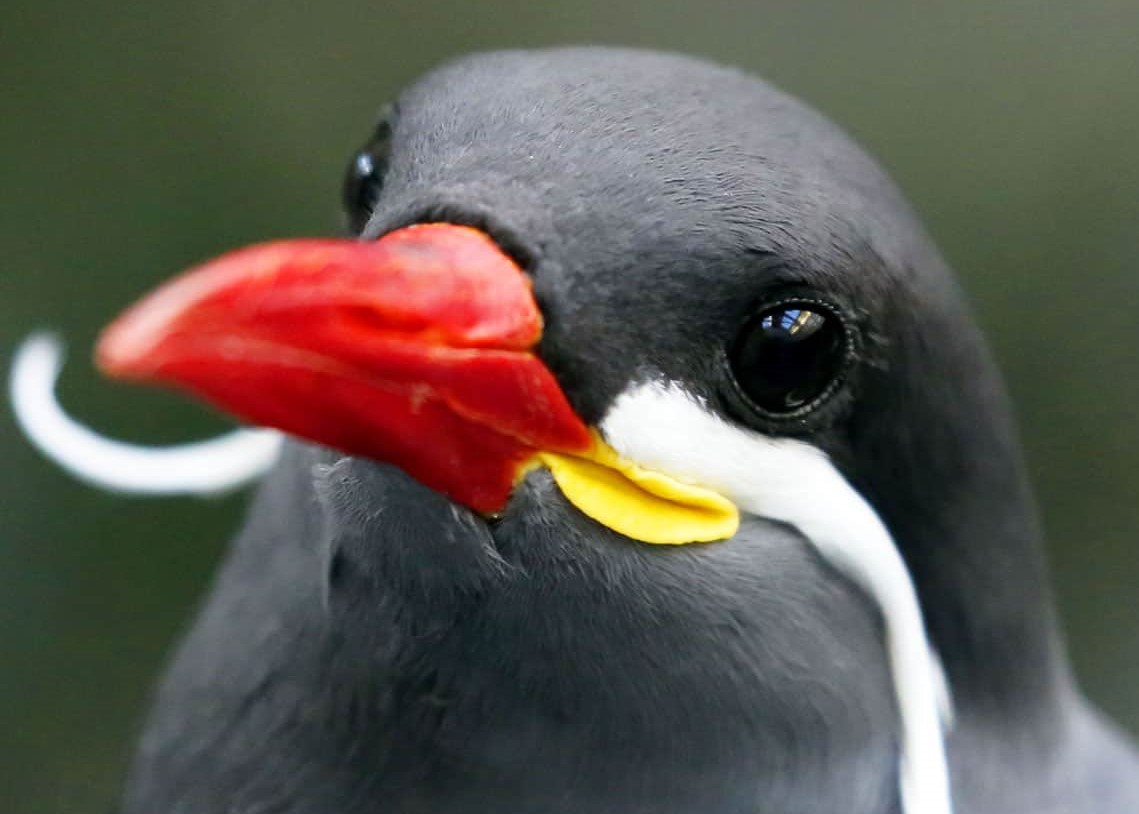
You are doing amazing work with this so far! I love how each moon has its own flavor and yet somehow they all still feel like they belong. I am also very angry about the Karkhalan and want to learn more about why I am angry at them.
Necromancy is a Wholesome Science.
Thank you so much! I really appreciate the kind words <3 I guess that means I should work on articles in Karkhala then :D